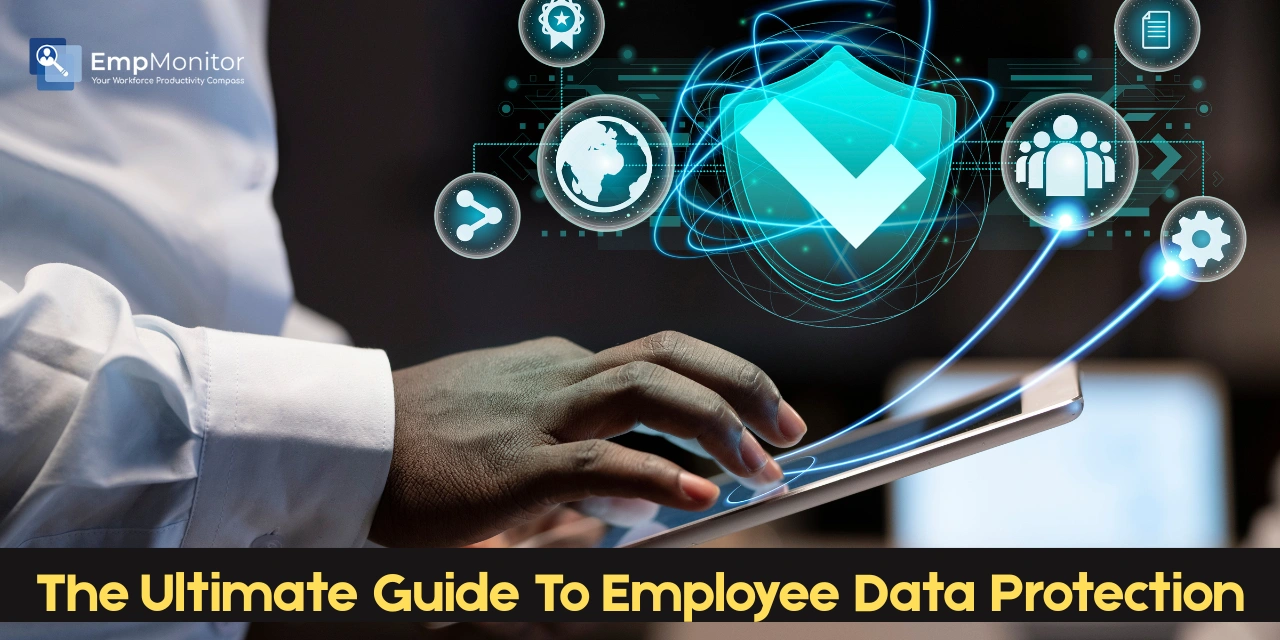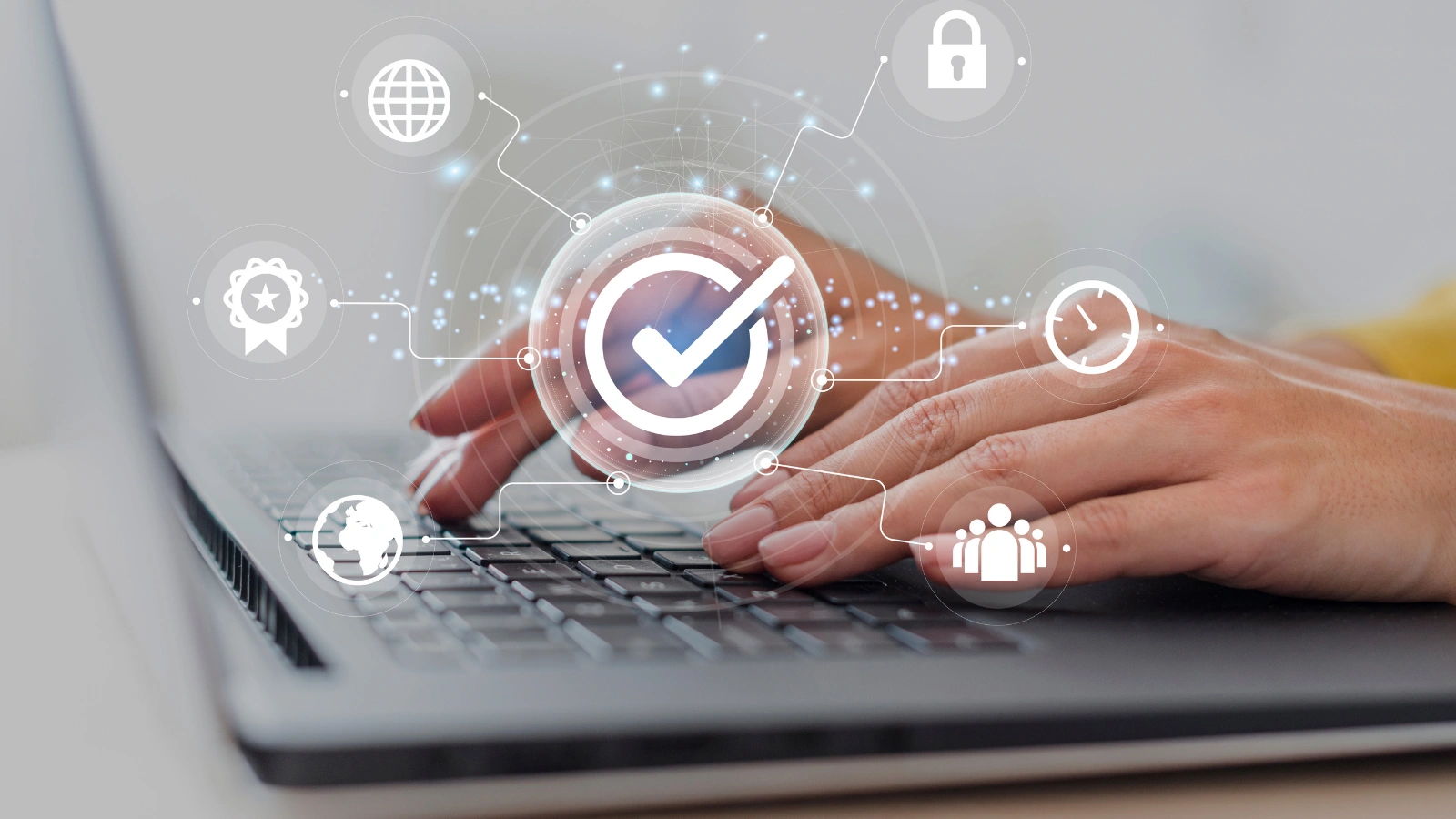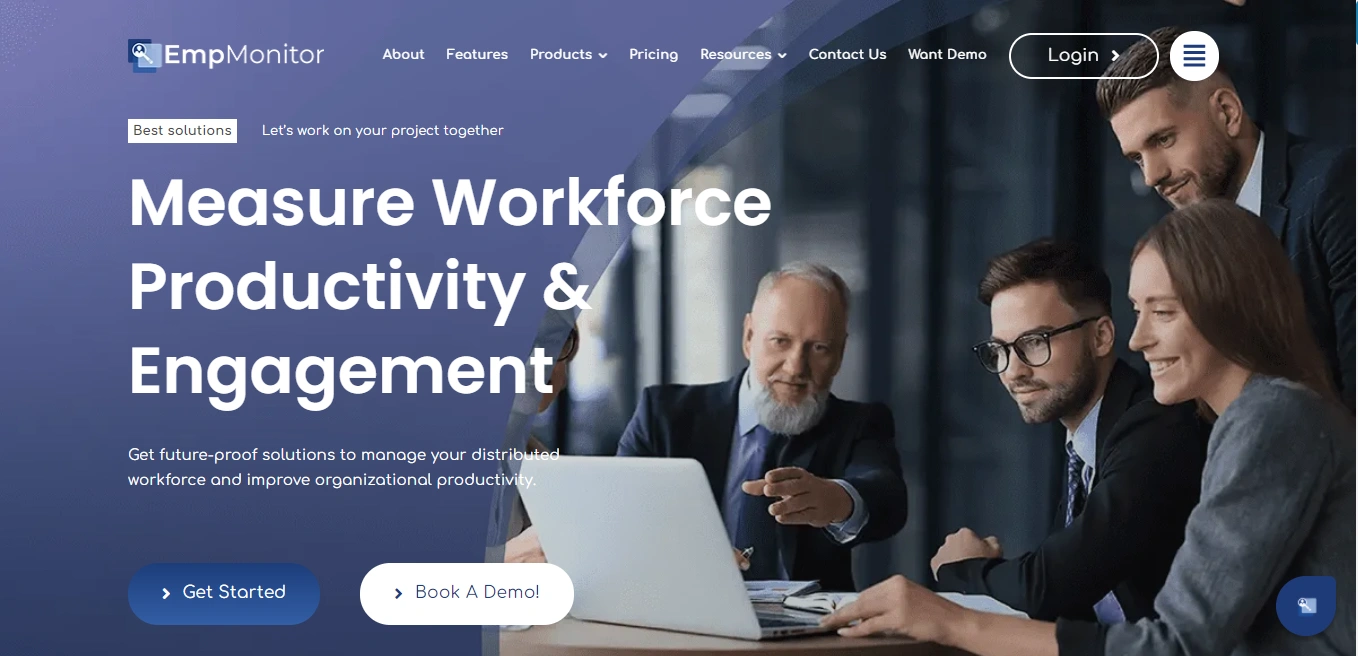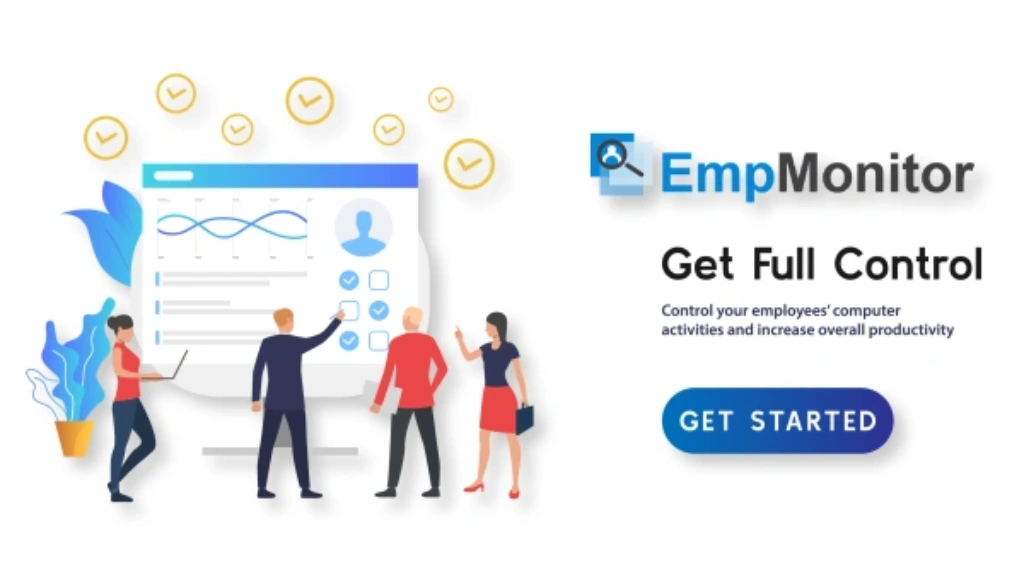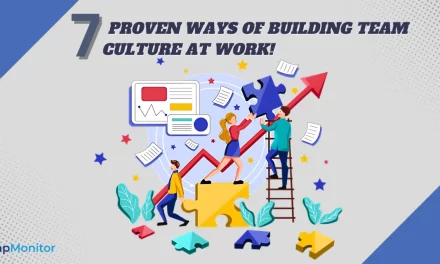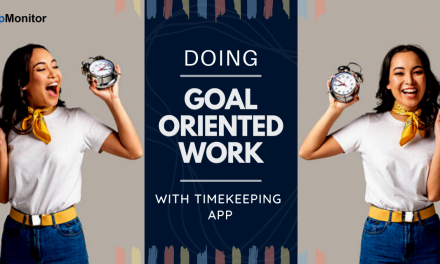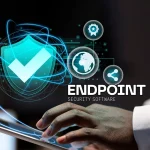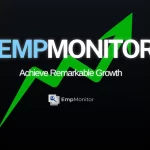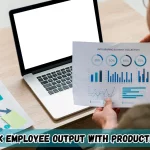Protecting employee data isn’t just a best practice anymore; it’s a must in today’s fast-paced digital workplace. With remote work, cloud-based platforms, and an ever-growing list of data regulations, employee data protection has become a critical focus for businesses across every industry.
This guide dives deep into why safeguarding your workforce’s information matters, how to implement effective strategies, and what tools can support your compliance and security efforts. Whether you’re a business owner, HR leader, or IT manager, understanding and investing in employee data protection is essential for sustaining trust, avoiding legal pitfalls, and enabling safe growth in the digital era.
In a Hurry! Listen to the Blog Instead
What Is Employee Data Protection?
Employee data protection involves the strategies, tools, and policies put in place to secure sensitive information related to your employees. This includes names, addresses, salaries, identification numbers, health records, performance reviews, and more.
Such data is not only essential for operations, but it’s also deeply personal. Mishandling or exposing this information could lead to privacy violations, lawsuits, and reputational damage. That’s why modern organizations must prioritize data protection as a strategic imperative, not just a compliance checkbox.
As workforces become more digital and globally distributed, the risks of unauthorized access, cyberattacks, and accidental leaks increase. A strong strategy ensures sensitive records are guarded at every touchpoint, whether stored in the cloud, on-premise, or in transit. Protecting this data is not just ethical, it’s essential for long-term business resilience.
Why Employee Data Protection Is Non-Negotiable?
In the modern era of constant connectivity, the stakes for mishandling employee information are higher than ever. From strict legal regulations to growing cyber threats, businesses must treat employee data protection as a top priority, not a secondary concern.
Here’s why protecting employee information matters more than ever in 2025:
1. Strict Compliance Requirements:
Laws like GDPR, HIPAA, and region-specific labor regulations demand secure handling of employee information. Non-compliance can lead to substantial financial penalties, legal action, or government audits. Staying ahead of these rules protects both your business and your employees.
2. Increased Cybersecurity Threats:
Cybercriminals increasingly target employee data for its resale value and potential use in fraud. A single breach can expose thousands of records and cause long-term reputational damage. Businesses must proactively secure all data access points to prevent attacks.
3. Reputation and Trust:
Employees expect their data to be handled with integrity and care. When that trust is compromised, it can lead to a decline in employee morale, reduced engagement, and higher turnover rates. Prioritizing employee data protection helps build a workplace culture rooted in transparency, accountability, and long-term employee trust.
4. Remote and Hybrid Work Risks:
The rise of remote and hybrid work models adds layers of complexity to data protection. With more devices, cloud tools, and networks in play, vulnerabilities increase. Companies must adapt their security strategies to cover decentralized work environments.
What Type Of Employee Data Needs Protection?
To create an effective employee data protection strategy, you need to understand what data must be secured. Common examples include:
Personally Identifiable Information (PII):
Contains personal details such as full name, residential address, date of birth, contact number, and identification numbers like Social Security or Aadhaar.This data is often targeted for identity theft and fraud, making it crucial to protect.
Financial Information:
Covers salary details, bank account numbers, tax identification records, and payroll transactions. Unauthorized access can lead to direct financial loss and legal complications for both employees and the organization.
Medical Records:
Encompasses health insurance details, disclosed medical conditions, disability status, and vaccination records like COVID-19 documentation. Mishandling this data may violate health privacy laws like HIPAA and damage employee trust.
Employment Information:
Involves job titles, performance reviews, promotion history, attendance logs, and disciplinary records. Unauthorized exposure of this information can lead to internal conflicts, bias, or even legal claims. Strong employee data protection measures are essential to ensure this information remains secure and accessible only to authorized personnel.
Communication Records:
Includes company emails, chat histories, video calls, and messages from internal platforms such as Slack or Teams. These may contain confidential information or informal discussions that could be misused if leaked.
This data can be stored across HR systems, cloud platforms, internal communication tools, and even physical files. A breach in any area can expose sensitive material.
Also Read:
How To Plan A Perfect Hybrid Remote Work Schedule For Your Workforce In 2025?
What Are The Risks Of Not Having Employee Data Protection?
Without solid employee data protection measures, companies face several risks:
Data Breaches:
External hackers can infiltrate your systems and access sensitive employee information, including personal and financial records. These incidents highlight the urgent need for effective employee data breach protection, as attacks often happen through phishing, malware, or unpatched vulnerabilities.
Insider Threats:
Disgruntled, negligent, or unaware employees can intentionally or accidentally misuse or leak data. Such internal risks are harder to detect and can be just as damaging as external attacks.
Financial Loss:
Data breaches can result in costly legal battles, regulatory fines, and compensation payouts. Additionally, businesses may face operational downtime and long-term revenue loss.
Reputation Damage:
When employee data is compromised, trust in your company declines quickly. Rebuilding credibility with staff and clients can take years, and some relationships may never recover.
That’s why every business must prioritize creating a robust employee data protection policy tailored to its operational structure.
Also Read:
Insider Threat Detection: How to Identify & Prevent Internal Risks In 2025?
How To Improve Employee Productivity In 2025 | 09 Best Practices
How To Protect Employee Data: A Step-by-Step Framework
Protecting employee data requires more than just locking files behind a password. It’s a continuous process that combines robust technologies, well-defined policies, and a workforce trained in security best practices. Organizations must adopt a structured approach to mitigate risks, prevent breaches, and maintain regulatory compliance.
Below is a practical, step-by-step framework to build a solid foundation for employee data protection.
Audit Your Current Data:
Start by identifying all the types of employee data your organization collects and where it’s stored, HR systems, email, cloud apps, or physical files. Assess who has access to this information and whether that access is necessary.
An audit helps you uncover potential risks like redundant storage, outdated files, or unprotected endpoints. This step sets the stage for stronger security and informed decision-making.
Limit Access on a Need-to-Know Basis:
Not all employees require access to every category of data. By applying role-based access controls, you ensure that sensitive information is only visible to authorized personnel. This minimizes the risk of accidental exposure or internal misuse. Regularly review access logs and permissions to make sure they’re aligned with changing roles or responsibilities.
Use Strong Encryption and Authentication:
Encryption is one of the most effective ways to protect data in both storage and transit. Encrypt employee files, emails, and backup data to render it unreadable to unauthorized users.
Combine this with multi-factor authentication (MFA) to secure access points, ensuring even if a password is compromised, your systems remain protected. These layers play a vital role in strengthening your overall employee data protection strategy.
Train Employees on Data Privacy:
Even the most secure systems can fail if employees aren’t properly trained. Conduct regular sessions to educate your staff about phishing, password hygiene, and data handling protocols. Use real-life scenarios to make the training relatable and memorable.
Fostering a culture of awareness strengthens employee data privacy, turning every team member into a proactive line of defense against data breaches.
Monitor and Track Activity
Deploy employee monitoring software to track unusual behavior like unauthorized access attempts or large file transfers. These tools don’t just increase accountability, they help identify threats before they escalate.
Make sure your monitoring practices are ethical and transparent to maintain employee trust. Real-time alerts and reports also support swift incident response.
Implement Secure Data Disposal:
Keeping old, unnecessary data increases the risk of exposure and clutters your system. Establish clear data retention policies and timelines for disposal. When the time comes, ensure sensitive documents are properly shredded or digitally wiped using secure deletion tools. Secure disposal practices close the loop on your data protection lifecycle.
Best Ways To Protect Employee Data
In addition to structured policies and monitoring tools, implementing the right security measures is key to safeguarding sensitive employee information in modern enterprises.
Multi-Factor Authentication (MFA):
Using two or more verification methods significantly reduces the risk of unauthorized access, even if passwords are leaked or stolen.
Secure Physical Access:
Restrict entry to server rooms or data centers using smart cards, biometric scanners, or key-coded locks to prevent internal breaches.
Implement Data Loss Prevention (DLP) Tools:
DLP solutions detect and block unauthorized data transfers, ensuring sensitive employee information doesn’t leave your network unnoticed.
Deploy Reliable Firewalls and Anti-Virus Programs:
Strong firewall systems and updated antivirus software help block external attacks and malware that target employee databases.
Use Verified Cloud Services:
Opt for cloud service providers that follow global security standards, offer encryption, and allow granular control over who can access stored data.
With the right combination of tools, policies, and proactive strategies, protecting employee data becomes not just achievable but sustainable and scalable.
The Role Of Technology In Employee Data Protection
Modern threats require modern solutions. Here are key tools that can enhance employee data protection:
1. Employee Monitoring Software:
Employee monitoring tools help organizations track digital activities, detect suspicious behavior, and ensure that sensitive data is not being accessed or shared improperly. These solutions provide visibility into system usage, user behavior, and potential insider threats without violating employee privacy.
For businesses seeking a reliable and feature-rich option, EmpMonitor stands out with its intuitive interface, real-time monitoring, and detailed reporting features tailored for both security and productivity management.
2. Employee Management Software:
Modern HR tools streamline data collection, access, and reporting. They include built-in compliance features that support employee data protection efforts.
3. Workforce Monitoring Software:
These platforms go beyond monitoring by offering insights into workforce behavior, helping businesses proactively address potential risks.
Integrating such software helps maintain a strong employee data protection framework while supporting operational efficiency.
Why Is EmpMonitor The Ideal Solution For Employee Data Protection And Workforce Management?
In a time when organizations must balance performance tracking with privacy, EmpMonitor offers an intelligent and ethical solution. It empowers businesses to monitor, manage, and protect employee data through a robust set of features designed for today’s dynamic, distributed workforce.
EmpMonitor allows companies to gain real-time visibility into employee productivity without invasive practices. Its tools support compliance, reduce risk, and improve operational efficiency, all from one secure, centralized platform.
Key Features Of EmpMonitor
Employee Monitoring Software:
EmpMonitor gives you full control over distributed teams with detailed activity insights, helping you make data-driven decisions and improve team efficiency, without micromanaging.
Time Tracking:
Its intuitive time tracking captures active and idle hours, helping managers understand work patterns and generate accurate timesheets for better productivity evaluation.
User Activity Monitoring:
Track every click, keystroke, and interaction to uncover workflow inefficiencies, monitor compliance, and hold teams accountable, all without compromising transparency.
Insider Threat Prevention:
Detect suspicious behaviors in real time and prevent data breaches caused by negligence or malicious intent, enhancing the security of your internal systems.
Attendance Monitoring:
Automate attendance and leave tracking to minimize manual errors, simplify HR processes, and ensure smooth payroll processing through a unified dashboard.
Workforce Productivity & Engagement:
Gain full visibility into task progress and engagement trends to boost employee productivity, identify high performers, spot issues early, and foster a productive work environment.
Real-Time Activities Tracking:
Monitor website visits, app usage, and productivity levels live to ensure employees are focused and aligned with business objectives during work hours.
In a world where data protection and productivity go hand in hand, EmpMonitor ensures your business stays secure, efficient, and one step ahead.
Conclusion
Employee data protection is more than a legal obligation; it’s a cornerstone of a trustworthy and resilient organization. In a digital-first world, businesses must actively safeguard sensitive information to prevent breaches, build employee confidence, and comply with evolving regulations.
This requires a thoughtful combination of policies, training, and smart technology. EmpMonitor offers an all-in-one solution that empowers companies with real-time monitoring, productivity insights, and robust threat prevention, all from a centralized platform. It helps you stay proactive, not reactive, in managing data security. With EmpMonitor, you’re not just protecting data, you’re strengthening your workforce and future-proofing your business.
FAQS
1. What’s the difference between data privacy and data security for employees?
Ans. Data privacy focuses on how employee information is collected, shared, and used, while data security refers to the technical measures taken to protect that data from unauthorized access or breaches.
2. How often should employee data protection policies be updated?
Ans. Policies should be reviewed and updated at least annually or whenever there’s a significant change in regulations, technology, or business operations.
3. Can employee data be stored indefinitely?
Ans. No. Employee data should be retained only as long as it is necessary for legal, operational, or contractual reasons. After that, it must be securely disposed of.

